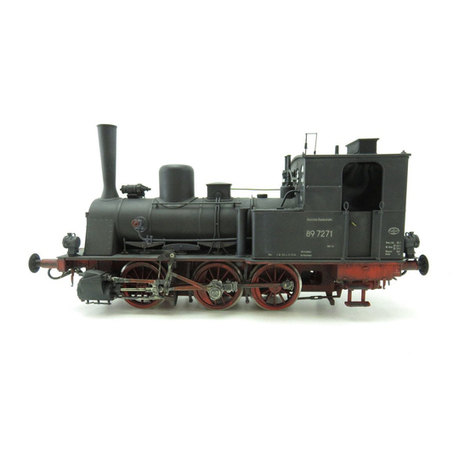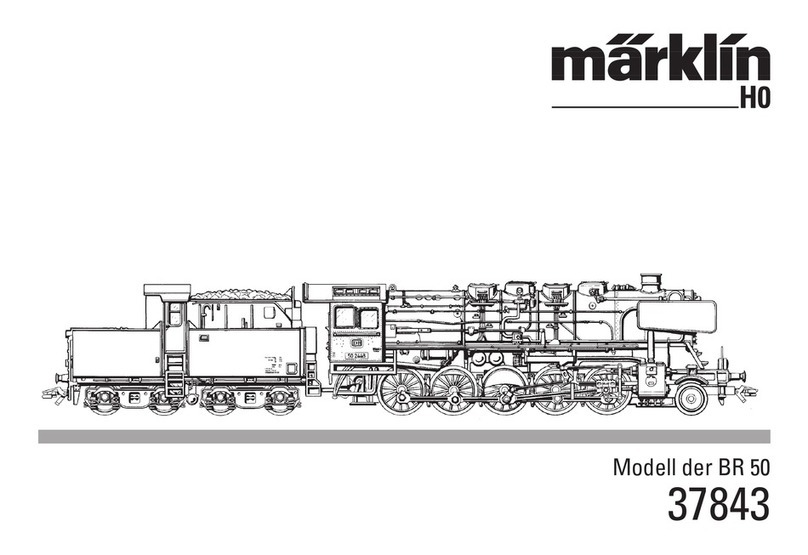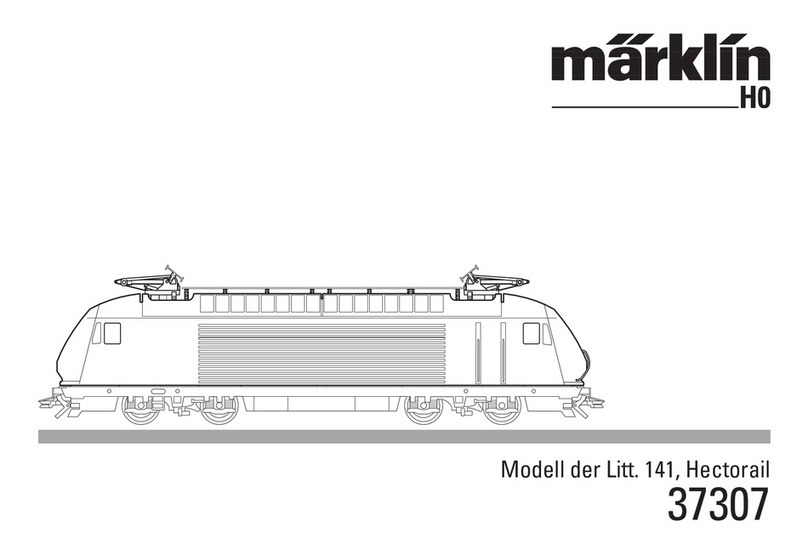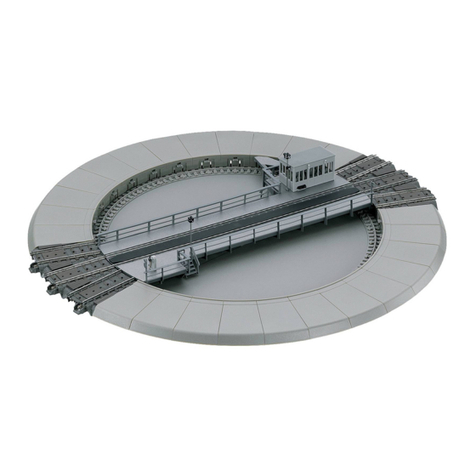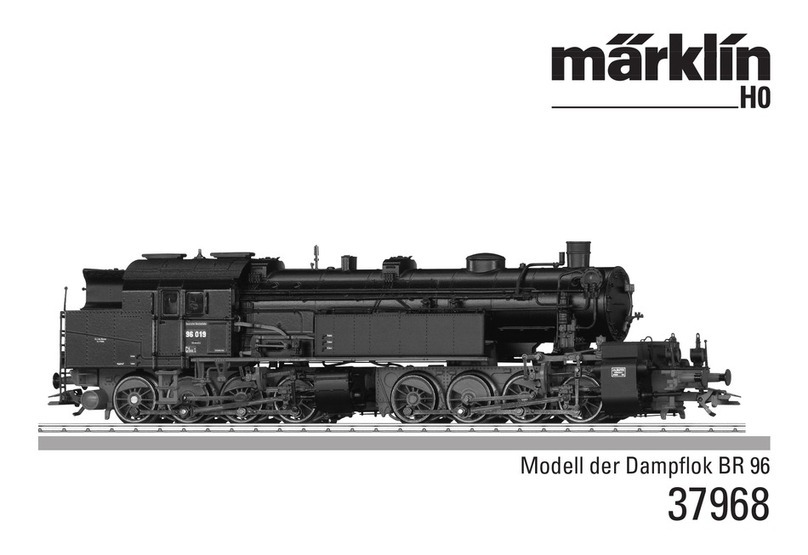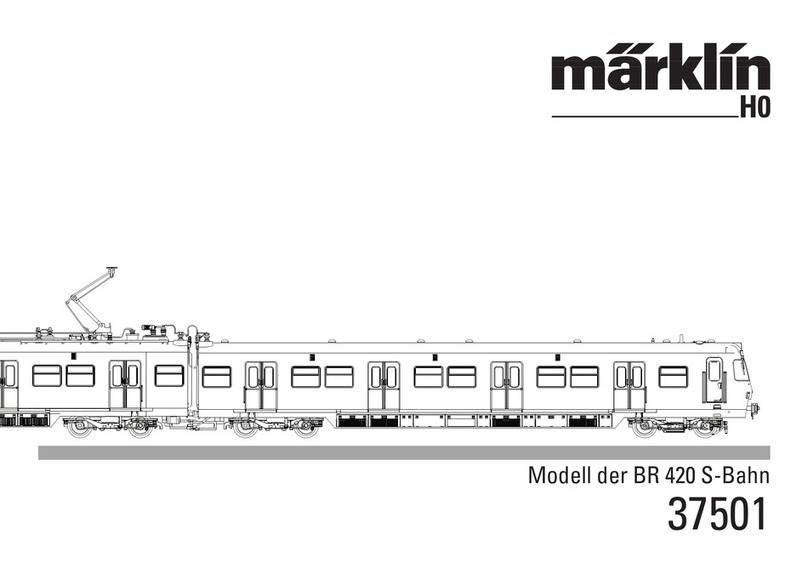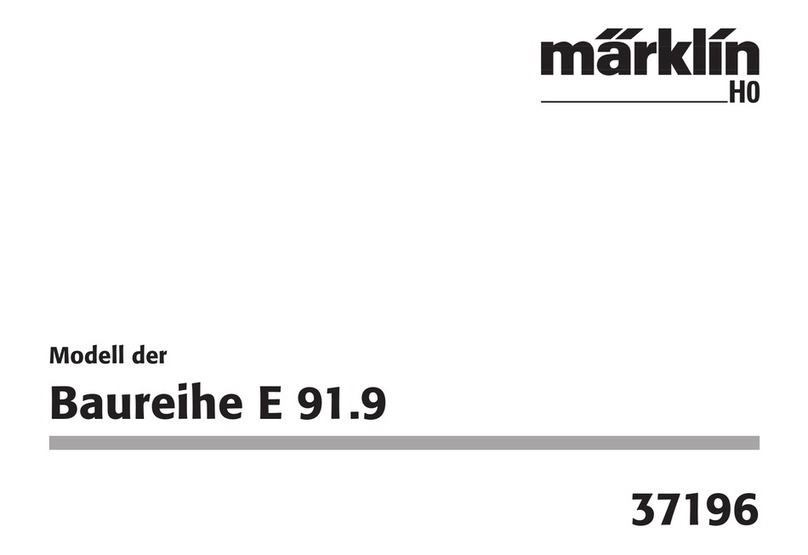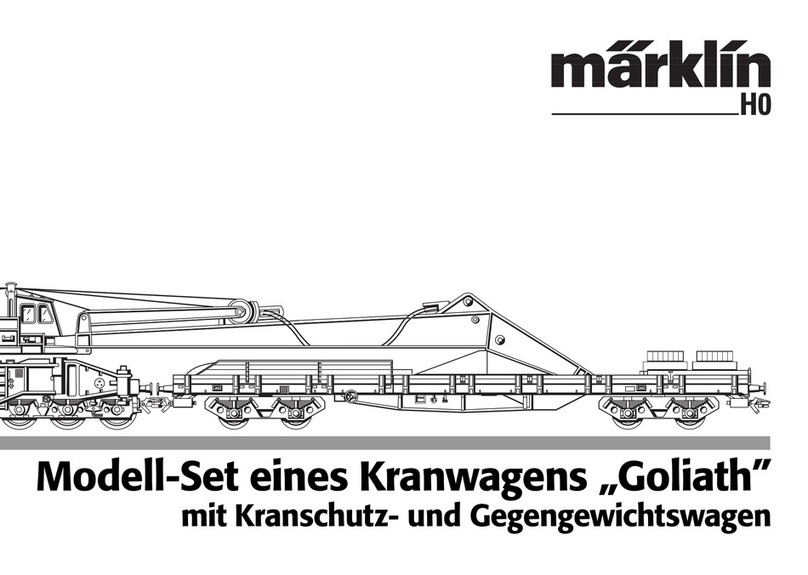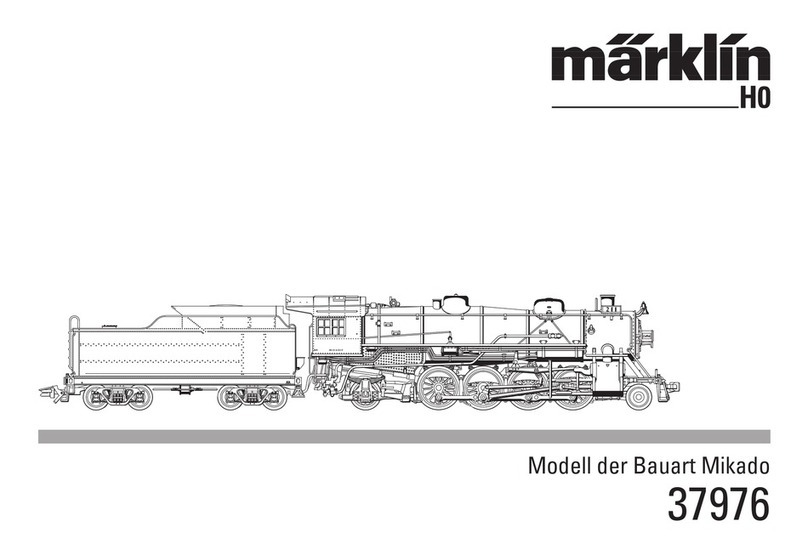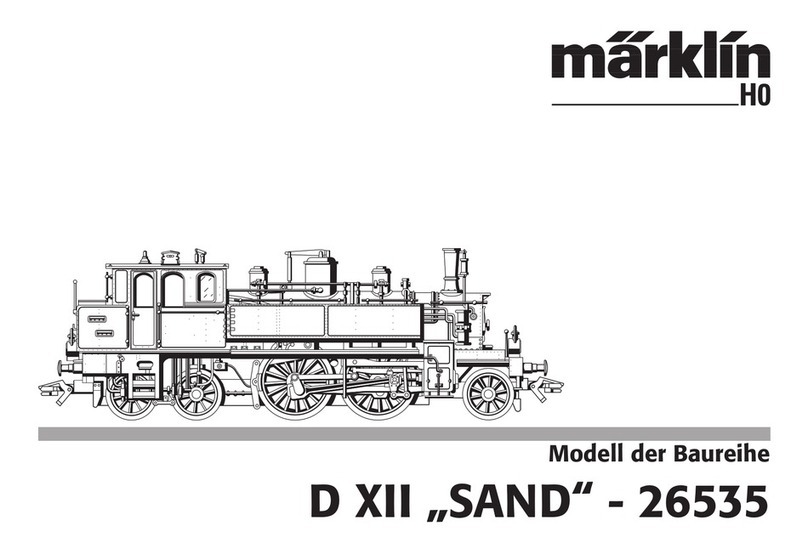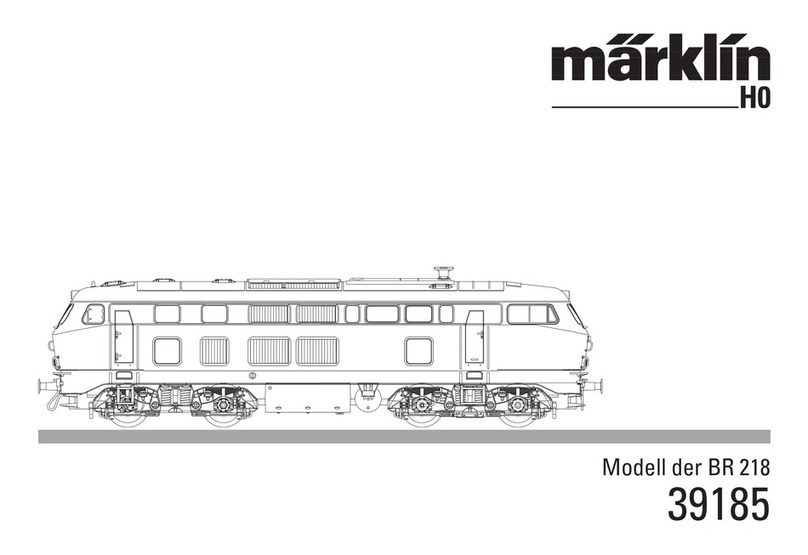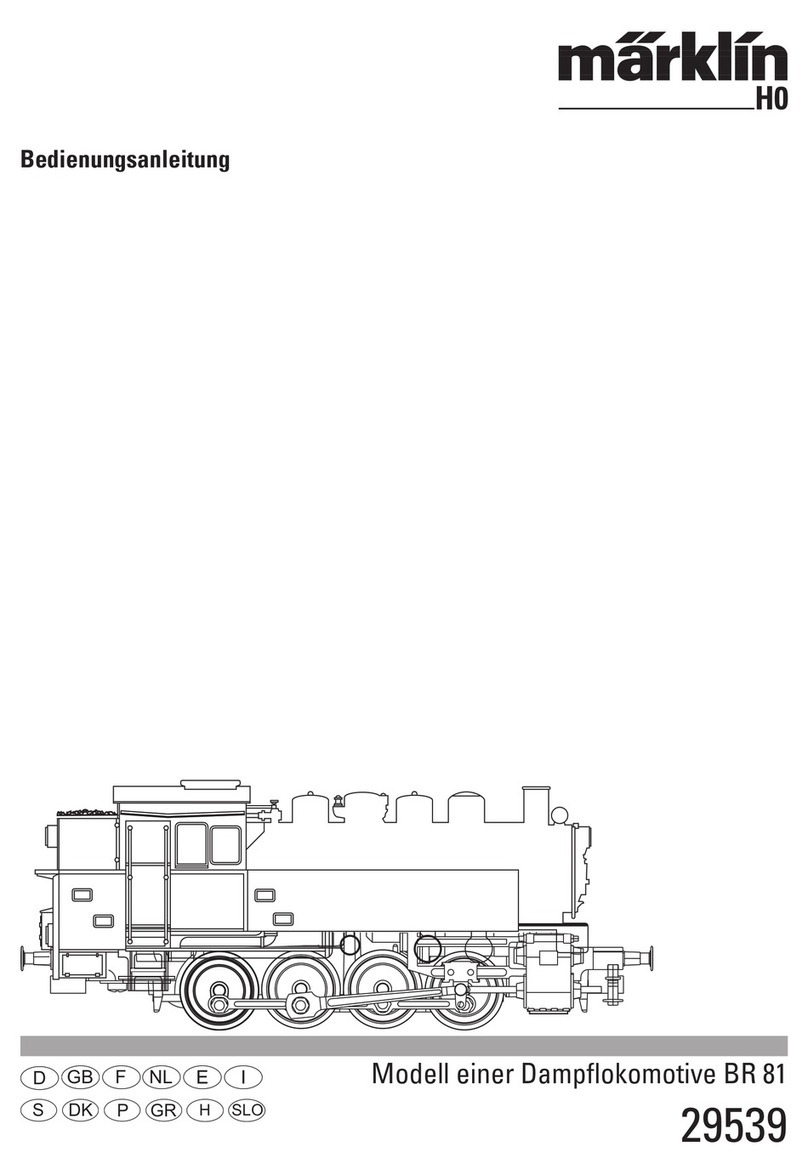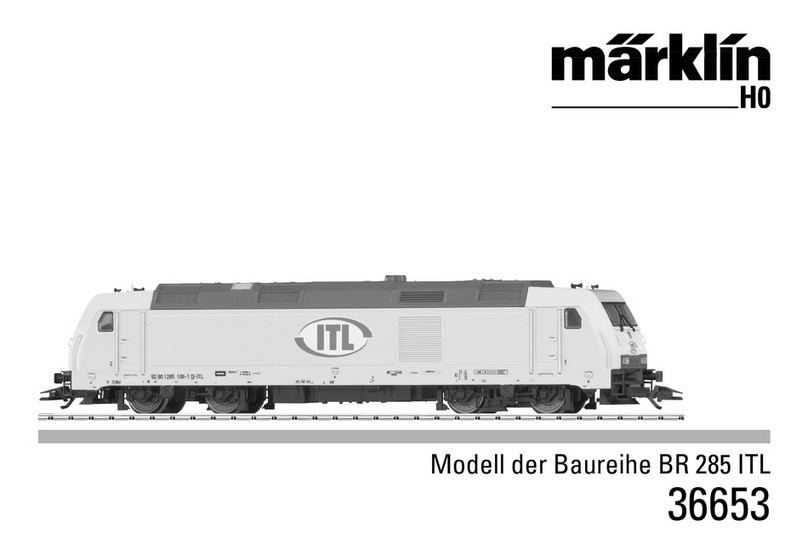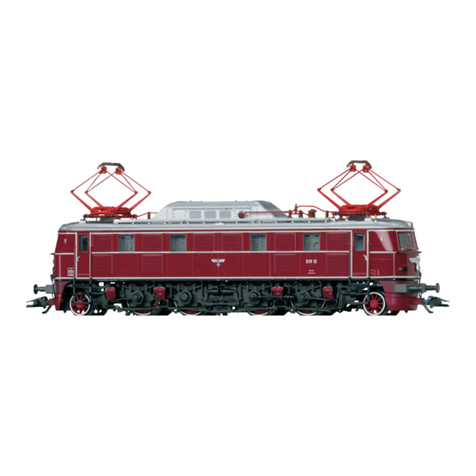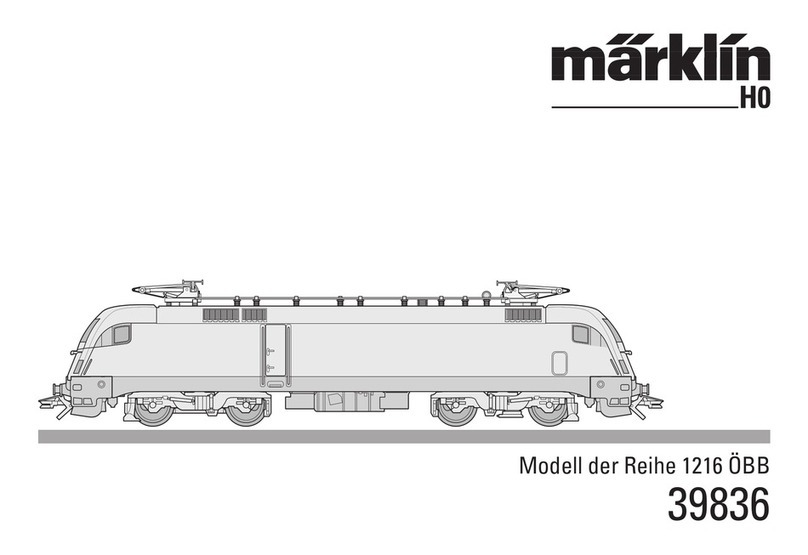4
Sicherheitshinweise
• DasModelldarfnurmiteinemdafürbestimmtenBe-
triebssystem eingesetzt werden.
• NurSchaltnetzteileundTransformatorenverwenden,die
Ihrer örtlichen Netzspannung entsprechen.
• DasModelldarfnurauseinerLeistungsquelleversorgt
werden.
• BeachtenSieunbedingtdieSicherheitshinweiseinder
Bedienungsanleitung zu Ihrem Betriebssystem.
• NichtfürKinderunter15Jahren.
• ACHTUNG! Funktionsbedingte scharfe Kanten und Spitzen.
Wichtige Hinweise
• DieBedienungsanleitungistBestandteildesProduktes
und muss deshalb aufbewahrt sowie bei Weitergabe des
Produktes mitgegeben werden.
• FürReparaturenoderErsatzteilewendenSiesichbittean
Ihren LGB-Fachhändler.
• http://www.maerklin.com/en/imprint.html
Funktionen
• DasModellistfürdenBetriebaufLGB-Zweileiter-Gleich-
strom-Systemen mit herkömmlichen LGB-Gleichstrom-
Fahrpulten vorgesehen (DC, 0 - 24 V).
• VerwendenSiefürdiesesModelleinFahrgerätmitmehr
als 1 A Fahrstrom.
Betriebsartenschalter
Das Modell hat einen vierstufigen Betriebsarten-Schalter
unter der Lok (Bild 1 & 2).
Pos. 0 Lok stromlos abgestellt
Pos. 1 Beleuchtung eingeschaltet
Pos. 2 Lokmotoren und Beleuchtung eingeschaltet
Pos. 3 wie Position 2
Mehrzweck-Steckdose
Das Modell hat jeweils eine Mehrzweck-Steckdose für
Flachstecker an beiden Stirnseiten (Bild 3 & 4). Über die
Steckdose können Sie LGB-Wagen mit Beleuchtung oder
mit Geräuschelektronik an die Gleisspannung anschließen.
Mehrzugsystem
Das Modell ist bereits werkseitig mit Decoder on board für
das LGB-Mehrzugsystem ausgerüstet. Es kann unverändert
auf herkömmlichen analogen Anlagen oder mit dem digi-
talenMehrzugsystemeingesetztwerden.ZumEinsatzmit
dem LGB-Mehrzugsystem ist das Modell auf Lokadresse 03
programmiert.
Informationen zum Programmieren der Lokadresse finden
SieindenAnleitungendereinzelnenMZS-Regler.
Beim Betrieb mit dem Mehrzugsystem können Funktionen
der Lok ferngesteuert werden. Über die Beleuchtungs-
taste (“9” bei Handys) wird die Lokbeleuchtung ein- und
ausgeschaltet.
Beim Betrieb mit dem Mehrzugsystem verfügt die Lok über
eineLastnachregelung:DieMotordrehzahl(unddamitunter
normalen Bedingungen die Geschwindigkeit) wird konstant
gehalten, auch wenn sich die Belastung der Lok ändert, z. B.
in Kurven oder auf Steigungen.
